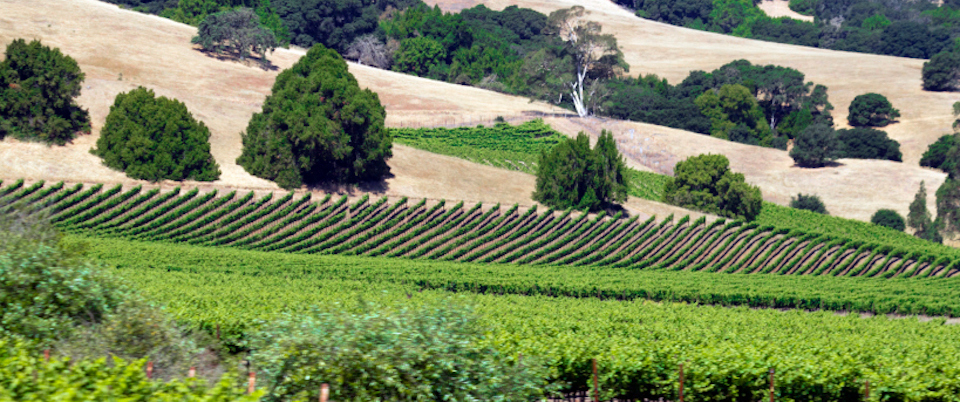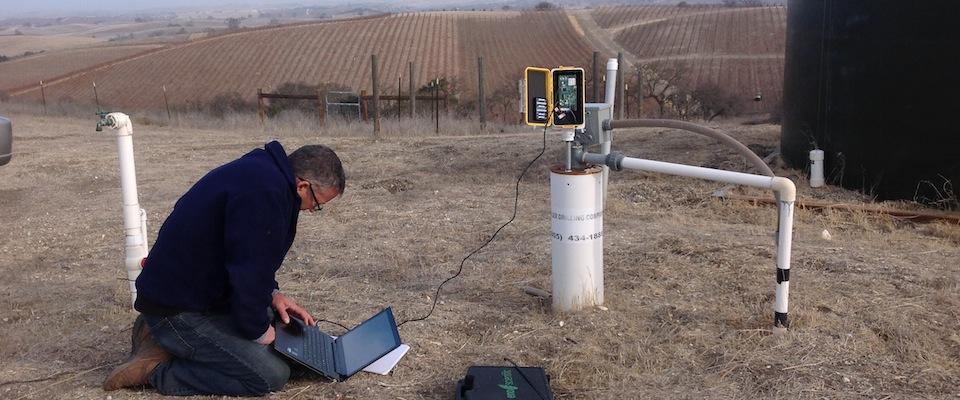The drought gets a lot of undeserved blame for California’s water crisis. Naturally, four dry years have exacerbated the problem, but the real culprit is the state’s Gold Rush–era water law, which has allowed landowners to sink wells that suck ever deeper and drier— unfettered by any accountability to their neighbors, their region, or the state. Historically low groundwater levels have resulted, spawning all kinds of Wild West drama. The Central Valley is sinking! A thousand Tulare County wells go dry! Fishermen, farmers, conservationists and tribes duke it out over depleted fisheries in the Scotts River. Journalistic treatises compare the political machinations to filmmaker Roman Polanski’s classic California water wars noir Chinatown.
But now that the Sustainable Groundwater Management Act—a trio of three bills that Gov. Jerry Brown signed in 2014—has been rolling out for a full year, all that drama is behind us, right? The sheriff’s in town now. The state’s big, contentious mess of a water crisis finally is regulated.
Not so fast. In reality, the new law creates something of a mess itself—a deep well of complexity that even in a best-case scenario won’t get the state to sustainably managed water until 2040.
To get a sense of why, picture California as a patchwork of 515 basin-based water regions. The new law mandates that in the next four to six years, each region must determine a groundwater governance scheme, form a groundwater sustainability agency, and write a management plan for its water. It sounds fairly straightforward, but the law often avoids dictating precisely how this must be accomplished—how to structure the governance, what water level is acceptable, how to measure water use. The state hasn’t even clearly defined the law’s central goal: “sustainability.”

Not to mention the likelihood that the local stakeholders who make up these new agencies are the same people who have been arguing over water issues for years. What could possibly go wrong?
The trope that a good compromise means everyone feels the solution is unsatisfactory might apply here—had it not guaranteed local control, the desperately needed law might never have been passed. And since no two basins are exactly alike, there’s an underlying hydrogeological logic to it, along with a deadline schedule that gives priority to the most critically depleted aquifers.
But tallying up all the things that need to happen, and happen effectively, gives pause, especially considering that each of the key steps must be approved by the state’s Department of Water Resources.
How all these implementation issues will unfold—over and over, basin by basin—and whether the process as a whole will work is a giant statewide experiment. Cue mandatory Chinatown reference: “You may think you know what’s going on,” John Huston’s Noah Cross said to Jack Nicholson, “but you have no idea.”
To get an idea, let’s start with hydrology 101: Groundwater is a system. Aquifers (big underground lakes) often connect to each other, forming systems called basins. Basins are connected to surface water systems like rivers and streams. Until now, California groundwater regulation (or lack thereof) ignored this fundamental science, allowing landowners to take water without accounting for how it might affect their neighbors. Imagine aquifers and surface water networks as giant glasses of water connected to each other through a narrow pipe. Stick a straw in your own glass, and levels in the whole row go down, eventually.
With the new law, landowners (everyone with a straw) and other stakeholders (everyone with a glass, which is pretty much everyone) finally have to work together to manage the impacts of water use within the whole basin.
After that, things get tricky.
An upcoming deadline makes a good case study of the law’s slippery slopes. By June 1, the state water department must draft the regulations on which to evaluate local sustainability plans. The department isn’t starting from scratch. The new law spells out six “undesirable results” that plans must avoid: Significant and unreasonable lowered groundwater levels, reduced groundwater storage, seawater intrusion, degraded water quality, sinking land, and depletion of interconnected surface waters.

The phrase “significant and unreasonable” applies to each outcome on the list. And therein lies the rub: One man’s “significant and unreasonable” is another man’s “looks OK to me.”
“What does that actually mean?” asks Michael Kiparsky, associate director of the Wheeler Institute for Water Law and Policy at Berkeley Law. “In particular, what does that mean for basins where some or all of those impacts have already been felt to a large extent? Figuring out how to interpret that and draw some clear guidelines and definitions in a way that can then be enforced is a tremendous challenge for the Department of Water Resources.”
In other words, the sheriff may be in town, but he’ll need to spell out a clear, enforceable set of rules before he can throw anyone in the hoosegow for breaking them.
“Groundwater moves between basins—it doesn’t have any respect for our jurisdiction lines,” says Juliet Christian-Smith, a climate scientist with the nonprofit environmentalist Union of Concerned Scientists who earned her Ph.D. from UC Berkeley. “Like a highway, the speed limit doesn’t change as you cross county lines, and traffic lights don’t change colors…. They need to stay the same to ensure equity and fairness across the state.”
It sounds like a no-brainer. But consider the state’s geological diversity, and the fact that beneficial water uses vary from basin to basin.
“What is ‘significant and unreasonable’ is very site-specific,” says engineering geologist Trevor Joseph, who is overseeing the emergency regulations for the state’s water resources department. In one basin, he says, “If the water level is too low to supply water for municipal users, then that might be ‘significant and unreasonable.’ Yet that same water level, in terms of depth, may be adequate in the basin just adjacent to it” —one that has a much smaller municipal water supply to support, or is mainly used for irrigation.

That’s why stakeholders in each basin need to sit down together, list local beneficial uses, and then hash out levels that steer clear of undesirable results. But Christian-Smith of the Union of Concerned Scientists says the state needs to be really clear about how it’s going to define ‘significant and unreasonable’ so that “people don’t just define it however they want to.”
Every step of the law is equally localized and equally freighted. In essence, says Berkeley Law’s Kiparsky, the new law requires that in many basins, two unpalatable things happen. “First, money is going to have be raised—at least some of that from local sources, and the second is that groundwater pumping is going need to be reduced. Neither of those things is always politically easy to do.”
“These are hard, complicated conversations and it’s tough to get everyone around the table,” says Caitrin Phillips Chappelle, associate director of the Public Policy Institute of California’s Water Policy Center and a graduate of the Goldman School of Public Policy. “There are still plenty of angry people, especially in the valley.” But she thinks regulation has created a new awareness that “business as usual in the Central Valley is not going to happen.”
There are actually two sheriffs in this story: California’s Department of Water Resources will establish the regulations, review local plans, and provide technical assistance. Enforcement is up to the State Water Resources Control Board.
But which local failures or inadequacies will trigger enforcement? All kinds of scenarios could play out, from individuals failing to report their water usage, to new local basin agencies refusing to follow their own plans. What then?
“Time will tell,” says Erik Ekdahl, program manager for the Water Board’s Groundwater Management Unit. “This is true for all new major resource management statutes—it takes a little bit to kick the wheels and see how it runs.” He thinks the toughest tests are likely to come at the compliance level. “You put together a water budget, and what happens when it shows you’re overdrafting your budget by 100,000 acre feet?” he asks. “Who is going to have to cut back? What project is going to be put on line to mitigate that level of overdraft and who is going to pay for it?”
But local entities are going to want to avoid the looming threat of state intervention—particularly given that the state can charge fees to cover the costs of their work. Such repercussions, experts agree, are a game-changer.
By 2020 the 21 top-priority regions—the ones the state has identified as in “critical overdraft”—will be required to have a plan in place. And not until 2040 will all 515 basins need to be in compliance with their plans. “It sounds like a lot of time, but it’s not a lot,” says Joseph of the state water resources department, given the complex realities on the ground.
Despite the challenges, it’s encouraging that some of the very people who navigate these troubled waters day-in, day-out are the most optimistic.
“It really is an exciting piece of legislation,” says Ekdahl. “We go from essentially no groundwater management to a scenario where locals are going to have to do it—they’re actually going to have to measure what sustainability means to them so they won’t be able to just put their head in the sand and keep depleting an aquifer, depleting surface water…. They’re going to have to address these problems that have been going on for a hundred years.”




















